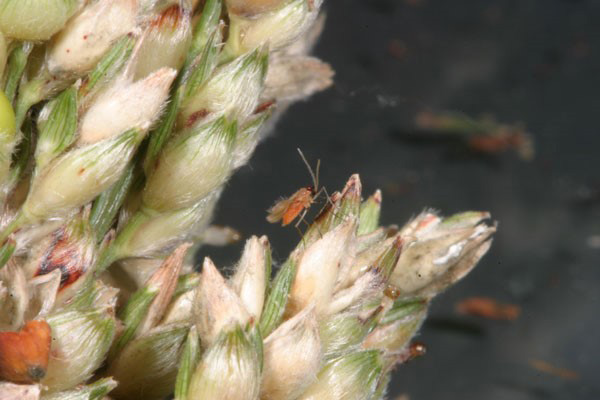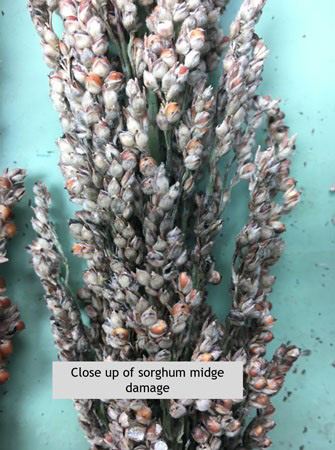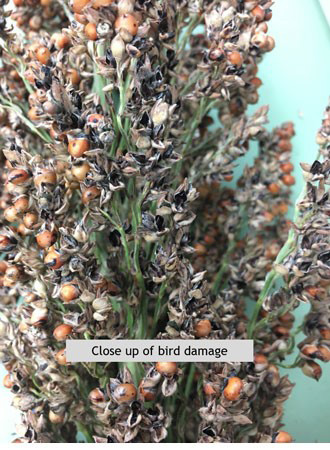Historically, sorghum midge has not been a significant pest in Kansas and has been primarily observed in the southeast portion of the state. However, in recent years, sorghum midge activity has been detected well outside of its typical range in Kansas with occurrences of significant losses in some locations. As sorghum harvest progresses this season, be on the lookout for sorghum midge damage. If you suspect damage, please reach out to your local extension professionals, as we are trying to better understand the distribution and impact of this pest across the state.
Sorghum midge is a very small reddish-orange fly (Figure 1) active when sorghum fields are blooming. While it is too late in the season to scout for sorghum midge adults, as sorghum reaches maturity, it is easy to find evidence of midge activity even if you did not see adults when the fields were blooming. Simply look for flattened, blank zones on the heads (Figure 2). These seeds never developed because the sorghum midge maggots consumed them from the inside. Be aware that it is easy to overlook or confuse sorghum midge damage with other sources of damage, with bird damage being a common confounding factor (Figure 3). Photographs can be very useful for differentiating sorghum midge from other sources of damage (Figure 4).

Figure 1. Close-up of a sorghum midge. Photo by K-State Extension Entomology.

Figure 2. Sorghum midge damage. The damage appears as blank zones on the flowering heads. Photo by Anthony Zukoff, K-State Research and Extension.

Figure 3. Bird damage on a sorghum head. This damage can be mistaken for midge damage. Bird damage will give the sorghum head a "blasted" appearance. Photo by Anthony Zukoff, K-State Research and Extension.

Figure 4. Various types of damage to sorghum heads. Left to right: undamaged head, severe sorghum midge damaged head, a head with heavy bird damage, and on the right, a head exhibiting headworm damage. Photo by Anthony Zukoff, K-State Research and Extension.
Anthony Zukoff, Extension Entomology Associate – Garden City
azukoff@ksu.edu